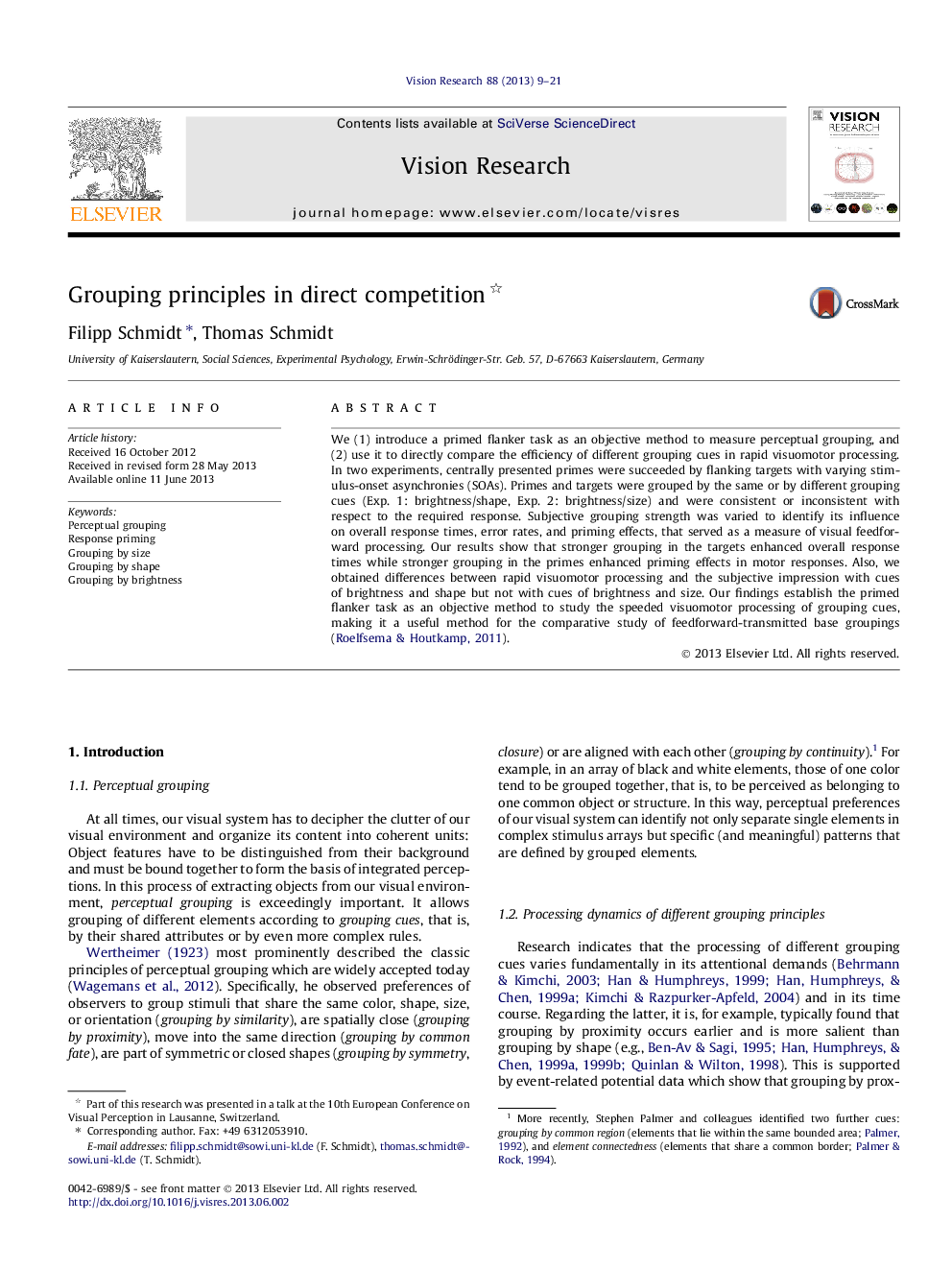| Article ID | Journal | Published Year | Pages | File Type |
|---|---|---|---|---|
| 4033775 | Vision Research | 2013 | 13 Pages |
•A new method is presented to compare grouping cues in fast visuomotor processing.•This primed flanker task is tested with similarity cues (brightness, shape, size).•Cues and grouping strength conjointly determine visuomotor processing.•Thus, the task differentiates between feedforward-mediated base groupings.•The task is established as an objective method to study grouping cues.
We (1) introduce a primed flanker task as an objective method to measure perceptual grouping, and (2) use it to directly compare the efficiency of different grouping cues in rapid visuomotor processing. In two experiments, centrally presented primes were succeeded by flanking targets with varying stimulus-onset asynchronies (SOAs). Primes and targets were grouped by the same or by different grouping cues (Exp. 1: brightness/shape, Exp. 2: brightness/size) and were consistent or inconsistent with respect to the required response. Subjective grouping strength was varied to identify its influence on overall response times, error rates, and priming effects, that served as a measure of visual feedforward processing. Our results show that stronger grouping in the targets enhanced overall response times while stronger grouping in the primes enhanced priming effects in motor responses. Also, we obtained differences between rapid visuomotor processing and the subjective impression with cues of brightness and shape but not with cues of brightness and size. Our findings establish the primed flanker task as an objective method to study the speeded visuomotor processing of grouping cues, making it a useful method for the comparative study of feedforward-transmitted base groupings (Roelfsema & Houtkamp, 2011).
